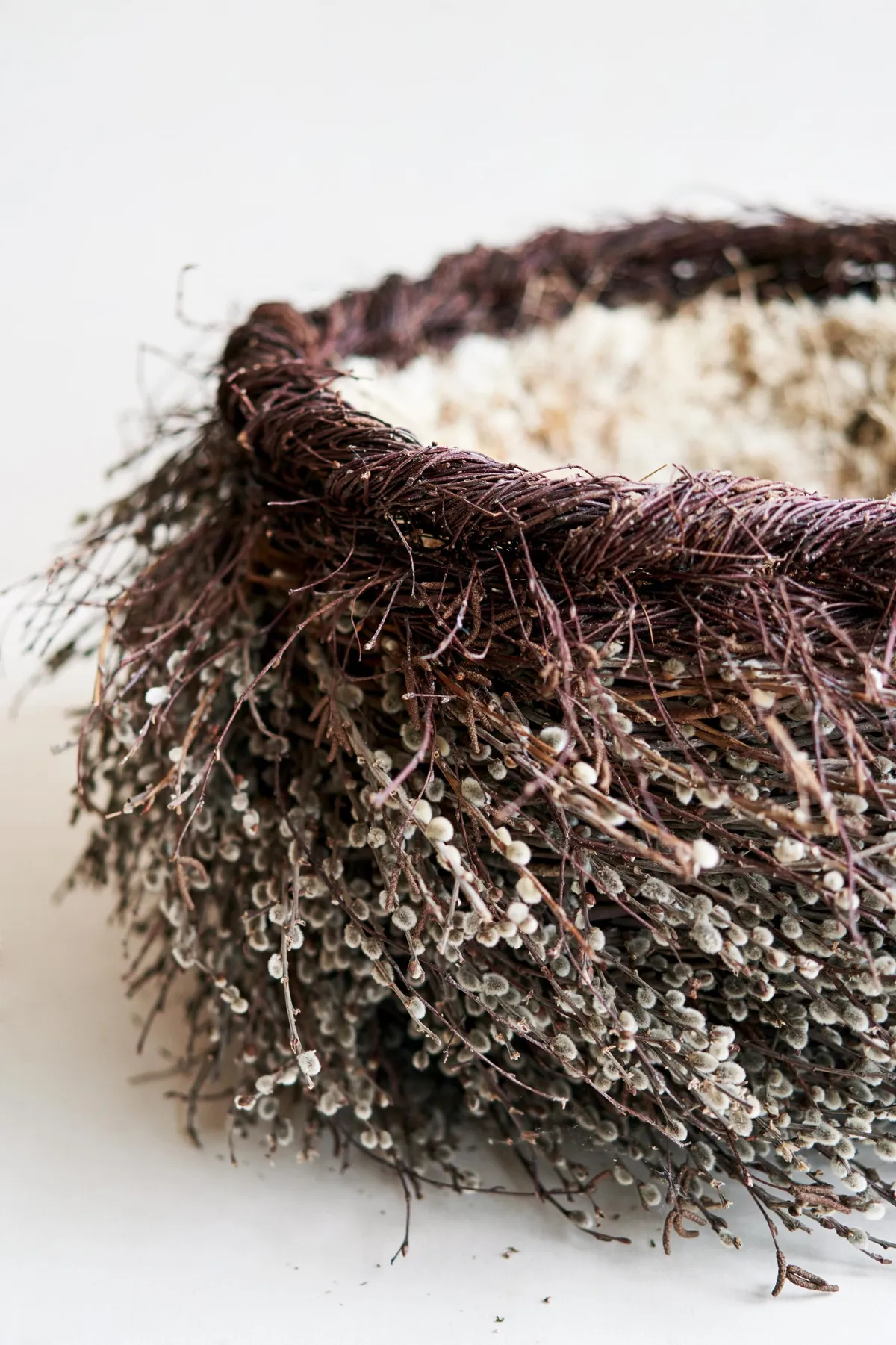Joe Hogan, master basket maker, is sitting on a low wooden seat in his stone workshop overlooking Loch Na Fooey in north Connemara, County Galway, surrounded by piles of wild material – stems of freshly cut willow catkins, twigs of lichen-encrusted larch, sprays of last season’s larch studded with cones. Cradled between his outstretched legs is a half-made nest that he is forming by pushing, bending and pulling stems in a seemingly random way, while he explains his journey from philosophy student to maker of unique woven pieces, showcased by galleries and bought by art lovers across Europe.
It was the rugged, wind-shaped mountain landscape of this part of Connemara, where each farm had a ‘sally garden’, a patch of sallies (the local name for Salix viminalis) used for cutting, that led Joe to basket making. “I knew I wanted to live in this amazing countryside, and thought basket making might be a way to make a living, especially if I could grow my own material.” He and his wife Dolores bought a house along the lakeshore and Joe went to Cork to learn the craft. He ended up teaching himself but was supported and encouraged by two brothers who made traditional baskets in white willow (stripped of bark) and in brown (in its natural state). Joe started off making Moses baskets, which kept him in business for the first few years. But then he was drawn to two traditional baskets that were still being made locally in Connemara: the creel, used as a donkey pannier for bringing turf down the mountain, and the skib, a cross between a colander and a dish for cooked potatoes, which was hung up to dry on the wall when not in use. Traditionally, both of these were made from a single type, but Joe began to introduce different coloured rods into the weave of his skibs. Customers mainly bought them as decorative pieces, while the creels were used to store things such as logs.
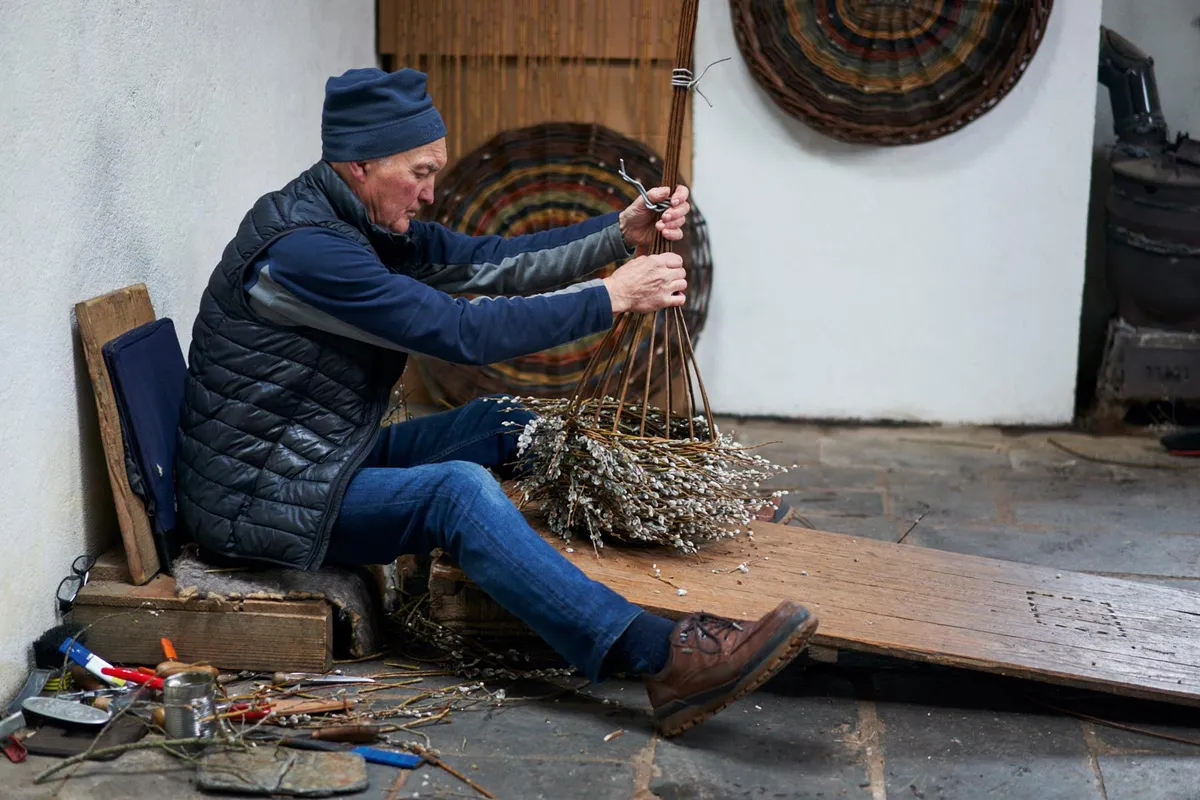
About 20 years ago Joe started to experiment with what he calls ‘artistic’ baskets. “I wanted to apply the traditional techniques to other projects, and also had the feeling that I wanted to reconnect with nature.” He had been gathering pieces of weathered wood – bleached gorse, driftwood, bog pine, holly – on his walks and began to explore how he could incorporate them into his work. The technique he had learned for making creels, which inverted the usual process by fixing the structural upright willow rods in the ground and then weaving around them from the ground upwards, gave him the idea for a series of organically shaped larger pieces.
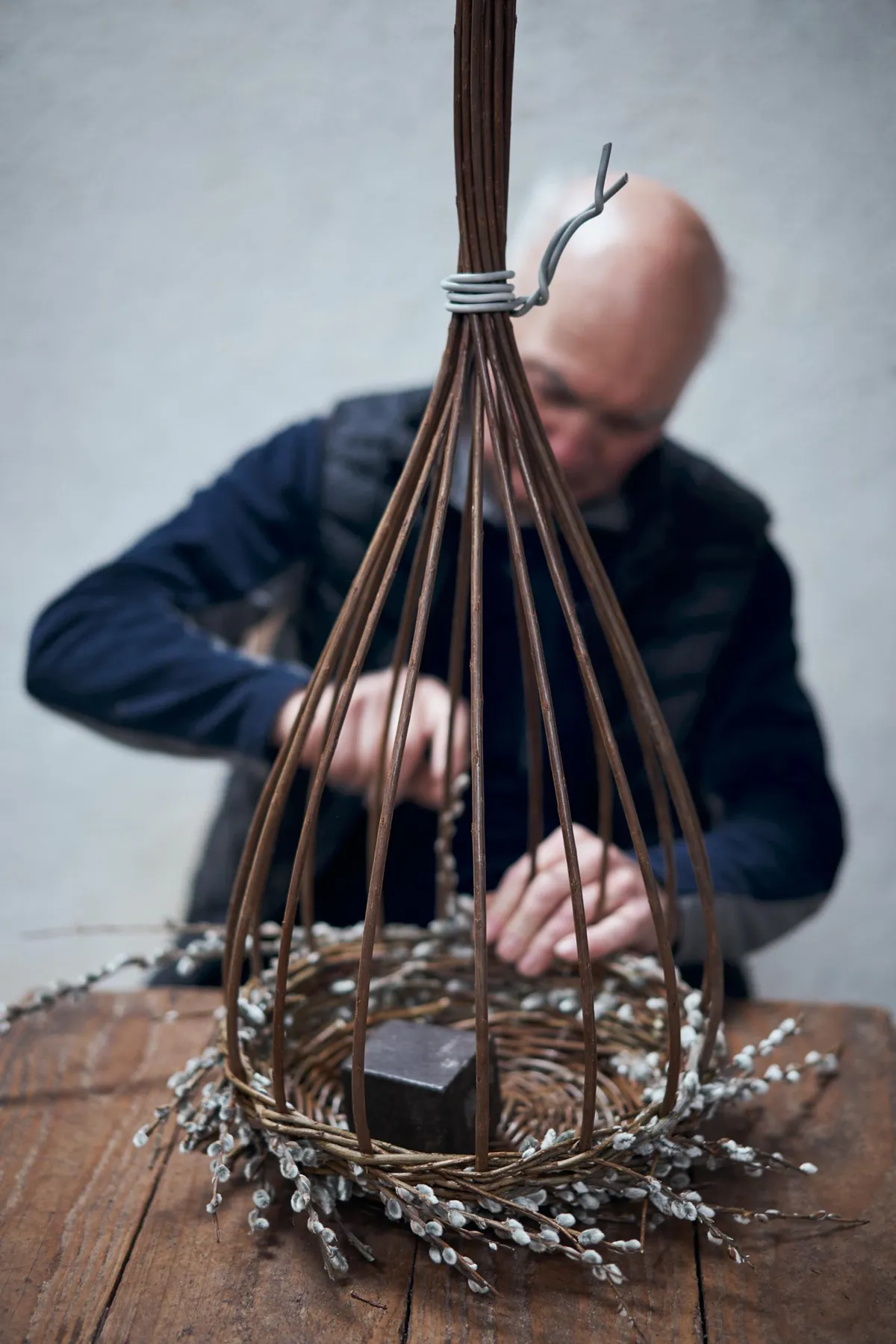
A Crafts Council bursary allowed him the time to make a number of these strikingly original vessel - or boat-like pieces, each one informed by the shape of the found wood, which he lays on the ground as the starting point. To his surprise they suddenly became commercially successful, as did his next development,
pod-like sculptures woven around ‘openings of wood’, pieces of weathered roots or branches that either form a natural aperture or that Joe creates by attaching two pieces together Joe started to experiment with interestingly shaped or marked stones as the focal point of these pods. Some of the largest of these unique pieces, more than a metre in diameter, were commissioned by the Spanish fashion house Loewe to form the stunning centrepiece of its Spring/Summer 2019 fashion show.
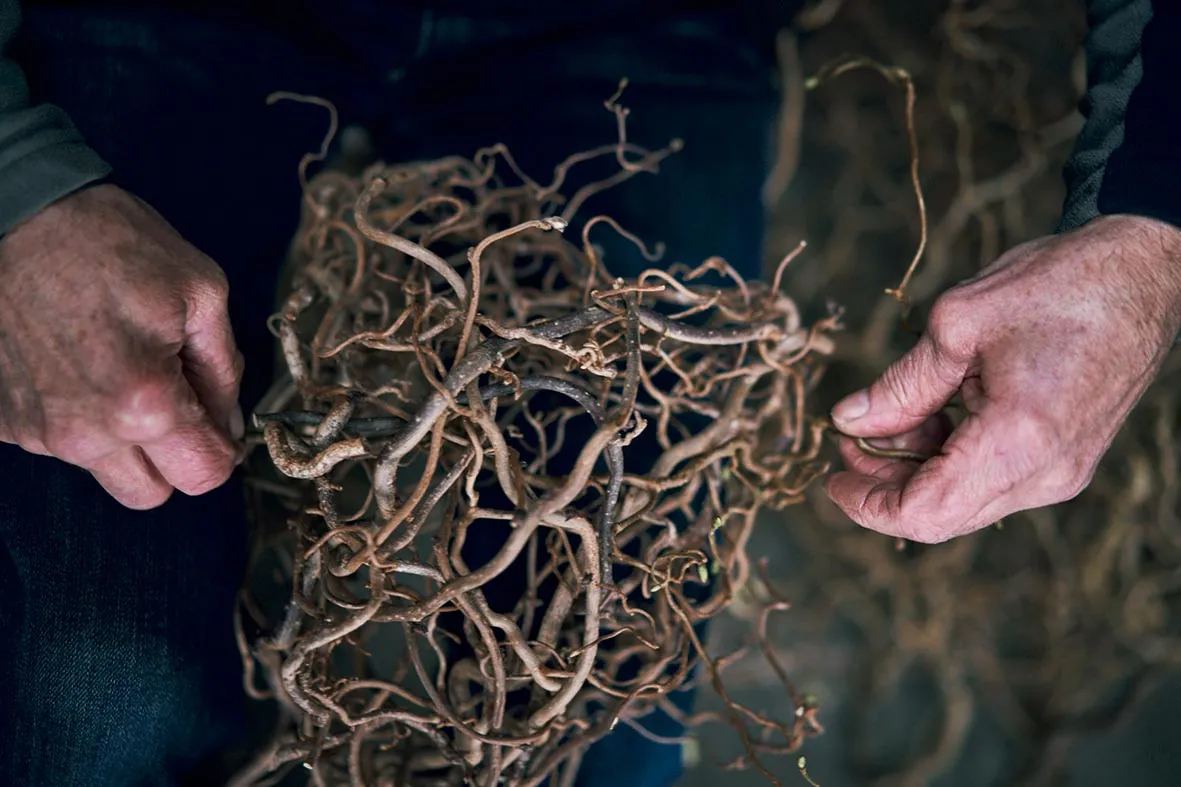
Weaving with other, less flexible materials – birch, hazel, larch, heather, bog myrtle – to create nest-inspired pieces is Joe’s most recent challenge. “I’ve always loved birds’ nests,” he says. “You are struck by the ingenuity, and then you become aware of the decline of bird numbers.” The first ones he tried were, he says, “a bit basket like”. But increasingly he is drawn to looser, less structured forms. “The nest making is informed by basketry techniques but now I’m trying to make something almost artless. I hope it isn’t obvious they are made by a person.” It is a skill that requires both the strength to bend less flexible branchy material, such as larch, and the lightness of touch to insert and fix lichen-covered stems without dislodging the delicate encrustations.
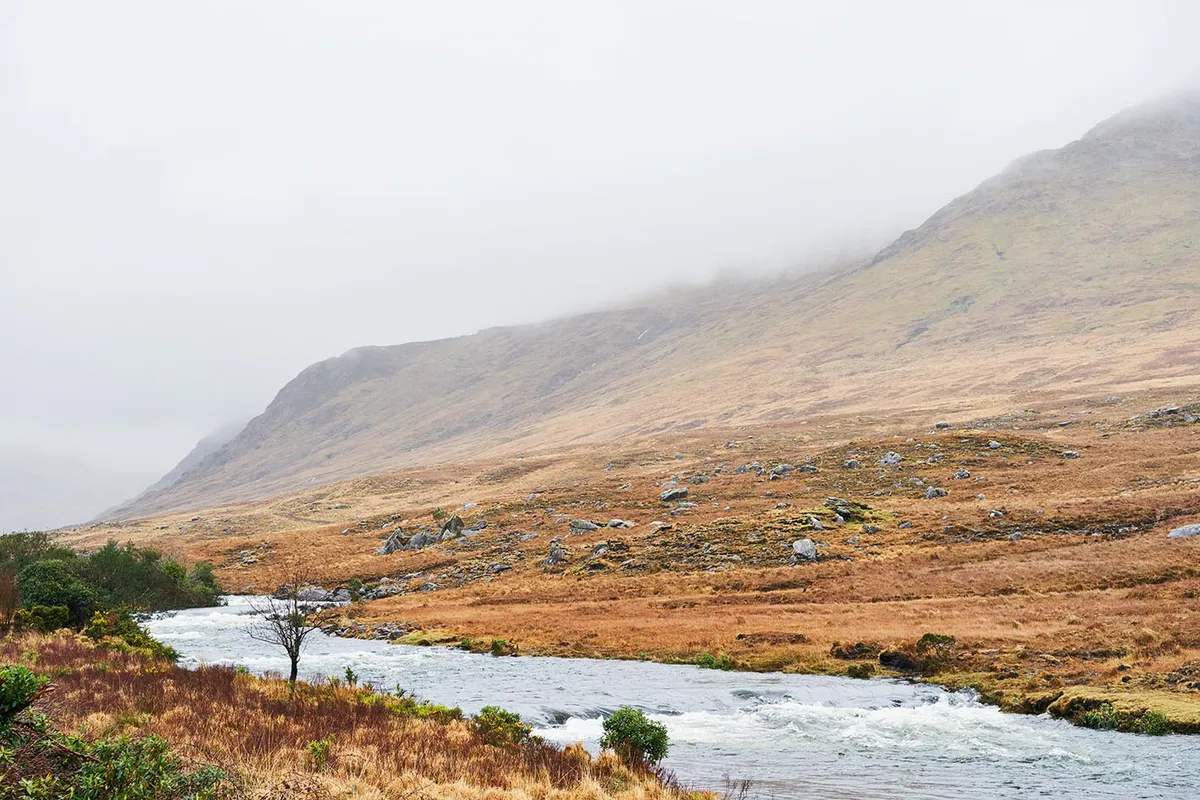
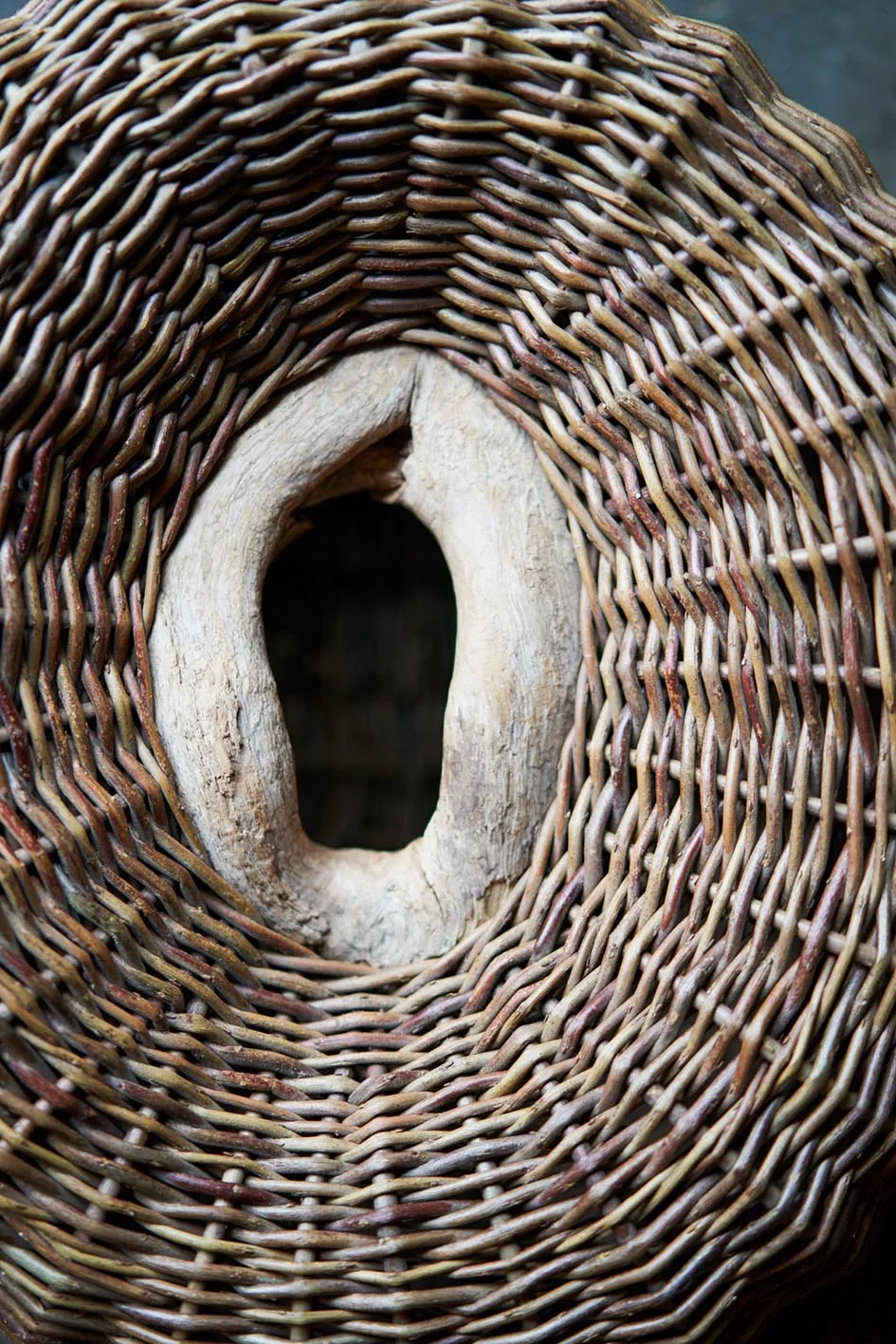

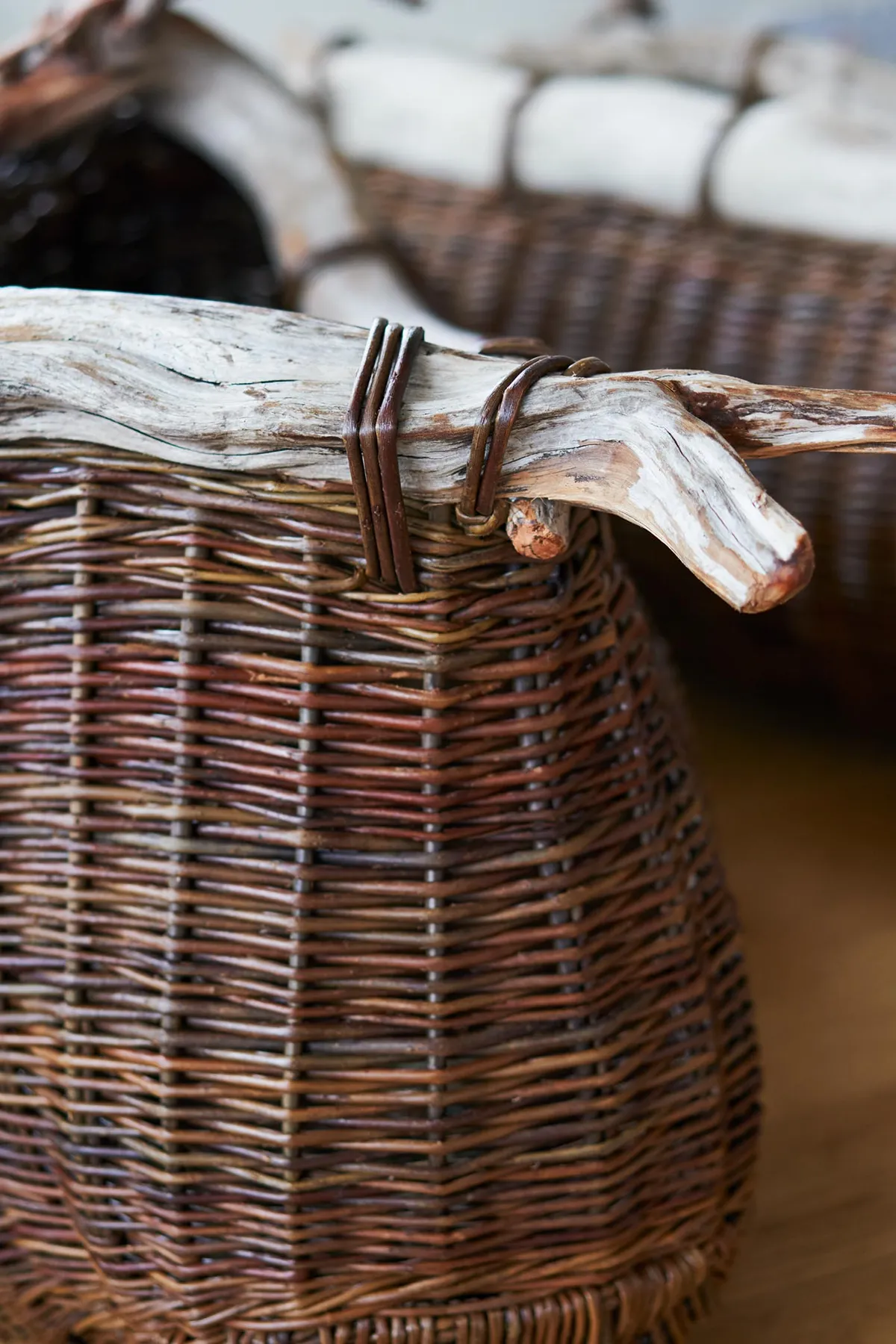
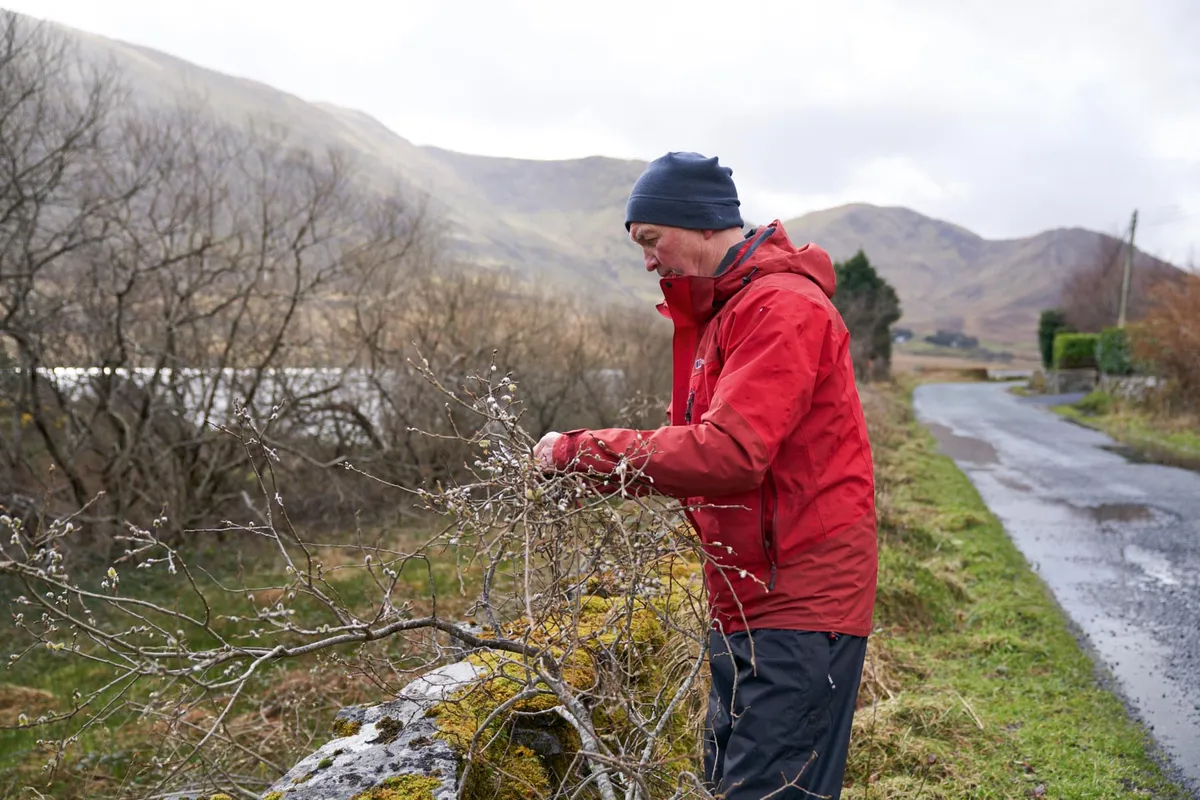
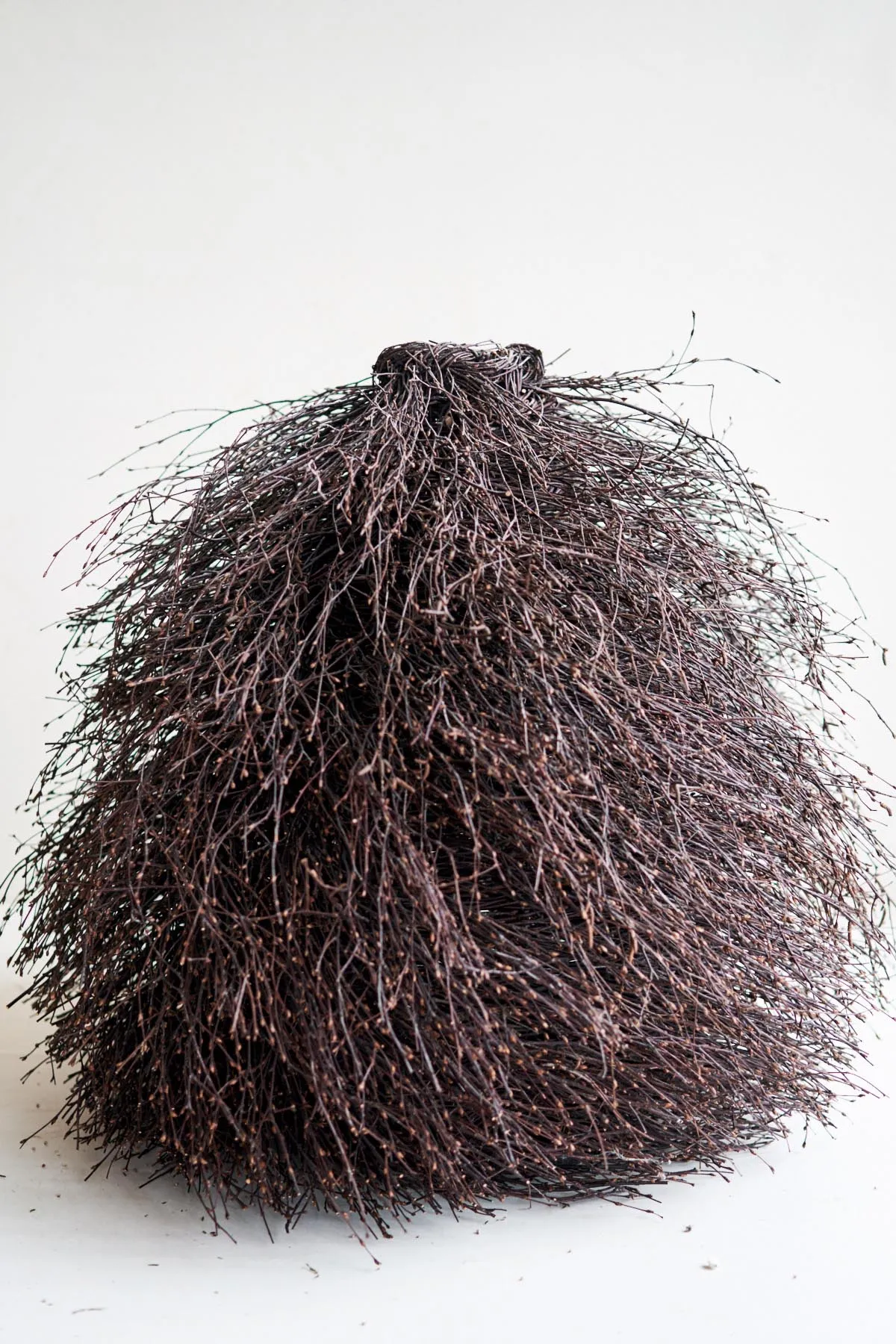
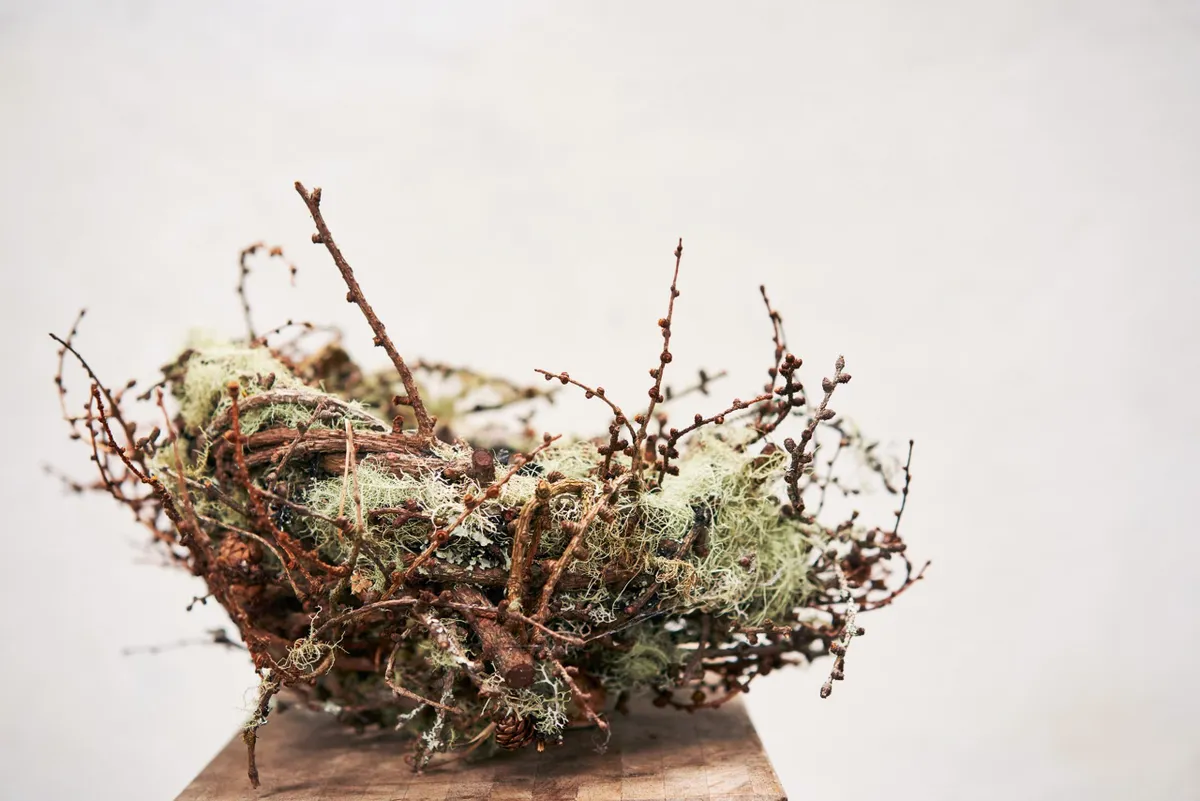
Find out more about Joe’s work at joehoganbaskets.com
Discover Hitomi Hosono's botanical porcelain studies and Rosie Sanders' rose paintings.
